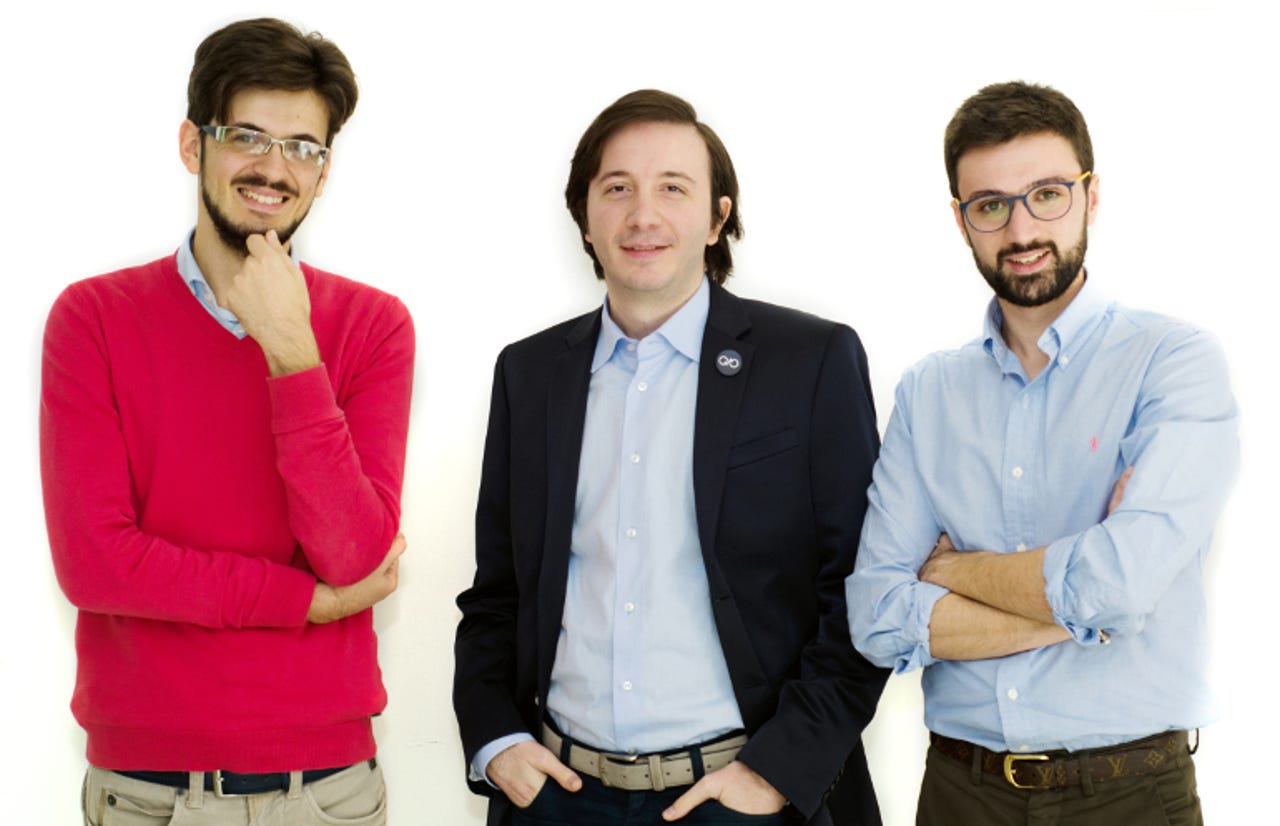GPS for indoors? The smartphone tech that guides you inside big buildings


Nextome founders: (from left) Giangiuseppe Tateo, Vincenzo Dentamaro, and Domenico Colucci. Their technology means subways, galleries, stores, and museums need fewer Bluetooth beacons to cover the same amount of space.
Driving from southern Italy to Scandinavia is not that difficult. All you need is a car and GPS on your smartphone. But if you have to find something closer and smaller, like a restroom in a shopping mall, chances are your mobile device will be useless.
No one knows that better than Domenico Colucci, a 26-year-old computer scientist from Bari, a city in the deep south of Italy. Colucci was named Young Web Entrepreneur of the Year by the European Commission in Helsinki, Finland, late last year.
The tiresome experience of taking 30 minutes to get to a much-needed bathroom in a multi-storied supermarket in Milan convinced him that he had to start working on developing a way to make indoor positioning systems more pervasive. Eventually, he found what he thinks is the answer.
Nextome, the startup he co-founded in 2013 along with former university mates Vincenzo Dentamaro and Giangiuseppe Tateo, patented a technology that promises to make the deployment of Bluetooth-based indoor geolocation services easier and more affordable.
The reason for the EU prize is Nextome's patented algorithm that reduces the electromagnetic noise that affects a Bluetooth transmitter's signal.
The noise lowers the quality of indoor positioning systems, forcing owners of malls and the like to install more beacons to offer a more precise service.
"Thanks to our software, we can increase the accuracy of the system from 5m to 6m down to 1m, allowing our customers to buy a smaller array of beacons for the same amount of space," Colucci told ZDNet.
He argues that by using Nextome's algorithm, one would need just 40 beacons instead of 150 to cover a 1,000-square-meters surface.
Colucci and his partners are convinced that a reduction in costs is an important factor for a more widespread adoption of indoor positioning systems, but believe ease of use could be just as crucial.
"We're working to make our technology as simple and scalable as we can for our customers," he says. "Except for the hardware, we provide everything else with a few clicks."
If a mall or a museum uploads the map of their spaces to Nextome's CMS, he explains, they immediately get an estimate of the optimal number of beacons, together with suggestions about where to place them.
On the same map they can also designate several points of interest that could trigger location-based services on the smartphones of passers-by, including, for instance, special offers from a nearby shop.
For the system to work, customers have to download Nextome's app or integrate the SDK into their own mobile application.
"What they pay for is the license for the SDK, which is priced according to the surface of the place," Colucci says. Everything else is provided, such as the analytics features that offer data on visitors' preferred routes inside the building or information about where the crowd tends to stop.
"And with the SDK they can develop for themselves services we didn't think of," Colucci adds.
Among those believing in Nextome's technology is Helsinki. Starting this month, the Finnish capital will begin testing the Italian startup's algorithm for its projected subway's indoor positioning system. But interest in the technology is widespread, according to Colucci.
The company is now looking for additional funding to manage the more than 700 requests it has received so far from those looking to try the service. "About 70 percent of them come from overseas, most of them from the US," he says.
Based on that level of interest, Nextome is planning to open a sales office in California, where it already has a customer, a San Francisco art gallery.
The rest of its operations will stay in Bari, where the co-founders, who had moved to other parts of Italy, have all resided since 2013, thanks to a grant offered by the Puglia region designed to lure in young talent.
One of Europe's most depressed areas, southern Italy is not usually considered the best place for startups to thrive. But Colucci and his partners are motivated to stay for business reasons as much as their love of the region.
"We have good engineers here, thanks to the local university," he says. "Plus, we really want to show that it is possible to do business and innovate even in the Mezzogiorno."